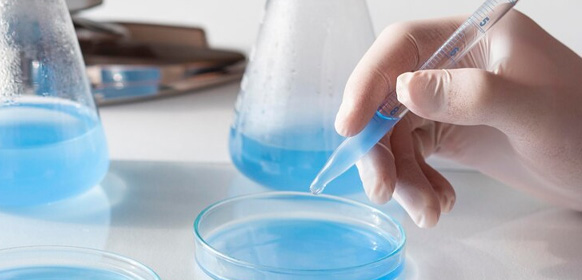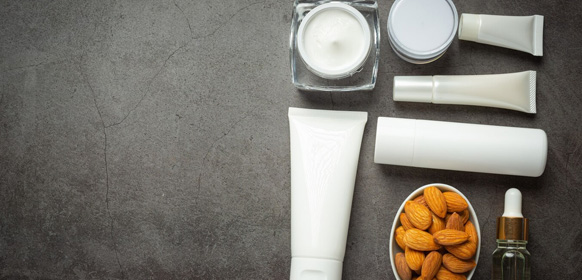
When it comes to makeup, do you ever wonder what you’re actually putting on your skin? Sure, the colors are vibrant, and the textures feels good on your skin, but what’s really inside that tube or compact?
Knowing the ingredients in your makeup is not just for the chemically curious; it’s essential for anyone who values their skin and overall health.
Top 8 Most Common Ingredients Makeup is Made of
Understanding makeup ingredients can help you make better choices for your skin type, tackle skin issues, and keep you informed about any potential allergens.
Plus, it gives you an edge when you’re trying to decipher those nearly unpronounceable names on the back of the cosmetic package.
1.Water
It’s usually listed first on cosmetic labels, and there’s a good reason for that. Water serves as a solvent in many formulations, meaning it helps to dissolve ther ingredients, making the product easier to spread on your skin.
Why is Water used in Makeup Products?
Water isn’t just a filler; it has several important roles:
- Solvent:Helps to mix oil and water-based ingredients for easier application of products like foundations and mascaras.
- Texture:Gives products like lipsticks and eyeliners a smoother consistency.
- Hydration:Adds moisture to products like BB creams and lotions, although the hydrating effects are usually minimal.
- Carrier:It carries active ingredients into the skin for better efficacy.
- Pigments
After water, pigments are the most common ingredients in color cosmetics. They’re the reason your lipstick is ruby red or your eyeshadow sparkles with golden hue.Essentially, pigments provide the color.
What are Pigments?
Pigments are particles that reflect and absorb light to create color. These can be organic or inorganic. The use of pigments isn’t just to make a product look pretty; they also have functional benefits.
2. Different Types of Pigments
- Inorganic Pigments:These are generally mineral-based and are considered to be more stable. They are often used in products where long-lasting color is important, like eyeliners, mascaras and mineral foundations.
- Organic Pigments:Technically speaking, in chemistry, “organic” refers to carbon-based molecules, which are found in both living things and in lab-made chemicals. In cosmetics, organic pigments are often derived from plant and animal sources but can also be synthesized in a lab. These are often found in lipsticks, blushes and liquid foundations.
Why are Pigments used in Makeup Products?
- In Foundations for their coverage and longevity
- In Eyeshadows for their blendability and finish
- In Lipsticks for their opacity and texture
- In BB Creams for added UV protection
- In Blushes for their natural look and ease of blending
3. Fragrances
The invisible yet unforgettable component—fragrances. They bring a sensory dimension to makeup that goes beyond the visual.
However, cosmetic manufacturers do not add fragrances to cosmetics only to make them smell lovely; they also serve other functions.
What are Fragrances?
Fragrances in cosmetics can be natural, like essential oils, or synthetic, made in a lab. Their main job is to add scent, but they can also have psychological effects, such as boosting mood or creating a sense of luxury.
Why are Fragrances used in Makeup Products?
- Masking Odor:Some makeup ingredients don’t smell great. Fragrances help mask those unpleasant odors.
- Enhanced Experience:A good fragrance can elevate the experience of using a product.
- Mood Elevation:Scents like lavender or citrus can have a calming or uplifting effect.
- Product Preservation:Some natural fragrances have antimicrobial properties, helping to extend the shelf life of the product.
4. Thickeners
When it comes to makeup, consistency is key, and that’s where thickeners come into play.
These agents help maintain the texture and viscosity of a product, making it easier to apply, more durable, and long-lasting on the skin.
What are Thickeners?
Thickeners can be natural, like xanthan gum, or synthetic. They are added to makeup formulas to improve stability, control flow, and enhance the feel of the product on your skin.
Why are Thickeners used in Makeup Products?
- Stability:Thickeners help to stabilize formulas, ensuring that they don’t separate over time.
- Ease of Application:A thicker consistency can make the product easier to apply accurately.
- Longevity:Thicker products generally have a longer staying power on the skin.
- Enhanced Feel:They improve the tactile experience, making products feel luxurious.
- Better Dispersion:Thickeners help distribute other ingredients more evenly within the formula.
5. Emulsifiers
The critical workers behind the scenes are emulsifiers.They perform the essential task of mixing water and oil-based ingredients, something that doesn’t happen naturally.
What are Emulsifiers?
Emulsifiers can be natural, like lecithin, or synthetic. They work by reducing the surface tension between the oil and water components, allowing them to blend seamlessly into a stable mixture.
Why are Thickeners used in Makeup Products?
- Stable Formulas:They prevent the separation of water and oil-based ingredients, making your makeup last longer.
- Uniform Texture:Emulsifiers ensure a smooth and consistent texture.
- Improved Absorption:They can make a product easier to absorb into the skin.
- Versatility:Enables the combination of ingredients with different properties, resulting in multifunctional products.
- Enhanced Shelf Life:Stability means longer shelf life (the open jar symbol on the back of a cosmetic product).
6. Preservatives
Let’s talk about preservatives. While they often get a bad reputation, they are a must-have for any makeup product that you don’t want to go bad within a week.
What are Preservatives?
Preservatives can be natural, like rosemary extract, or synthetic like parabens. Their primary function is to prevent the growth of bacteria, mold, and yeast in cosmetics.
Why are Preservatives used in Makeup Products?
- Safety First:Without preservatives, harmful microbes could thrive in your makeup, leading to skin problems.
- Longevity:They help your products last longer, saving you the hassle of frequent replacements.
7. Emollients
Emollients are the comfort food of the makeup world. They soften, they soothe, and they make everything feel better on your skin.
In a nutshell, emollients make your beauty products not only look better but also feel better.
What is an Emollient?
An emollient can be a natural oil like jojoba or a synthetic compound.
These ingredients are essential for improving your skin’s texture and appearance by filling in the gaps between skin flakes with droplets of oil.
Why are Emollients used in Makeup Products?
- Skin Softening:Emollients are the go-to for making your skin feel as soft as a baby’s.
- Barrier Function:They form a protective layer on the skin, keeping moisture locked in.
- Smooth Application:Make your cosmetics glide effortlessly during application.
8. Glimmer and Shine
Concluding with Glimmer and Shine, these ingredients attract attention by adding sparkle and luminosity.
What are Glimmer and Shine Ingredients?
Ingredients like mica, shimmering powders, and certain synthetic materials are commonly used. They have the ability to reflect light, contributing to either a sparkly or dewy finish in the final product.
Why are Emollients used in Makeup Products?
- Optical Enhancement:They modify the way light interacts with the product, influencing its visual appeal.
- Versatility:Suitable for a range of products and looks, from understated to more dramatic.
- Photography Benefits:The reflective properties can enhance how makeup appears in photographs.






















